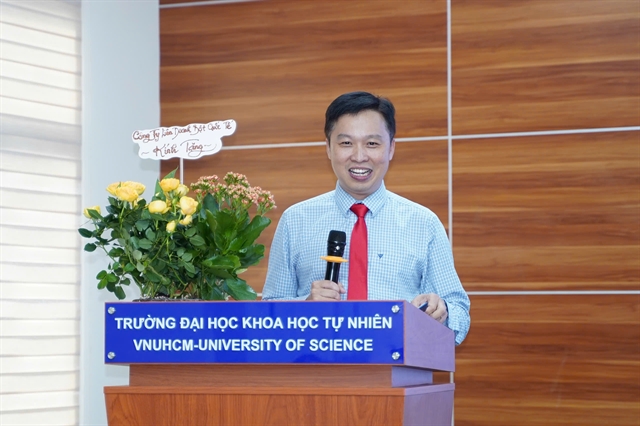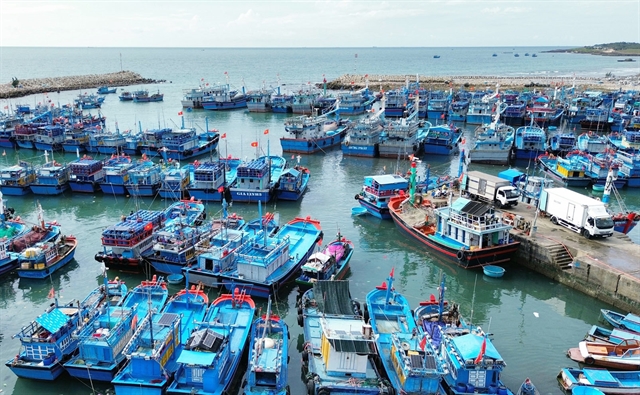 Opinion
Opinion
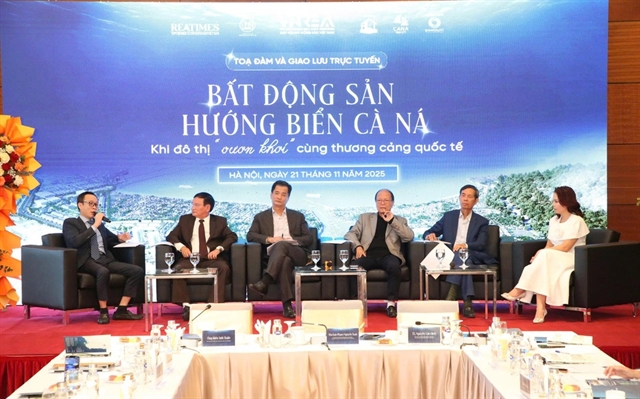
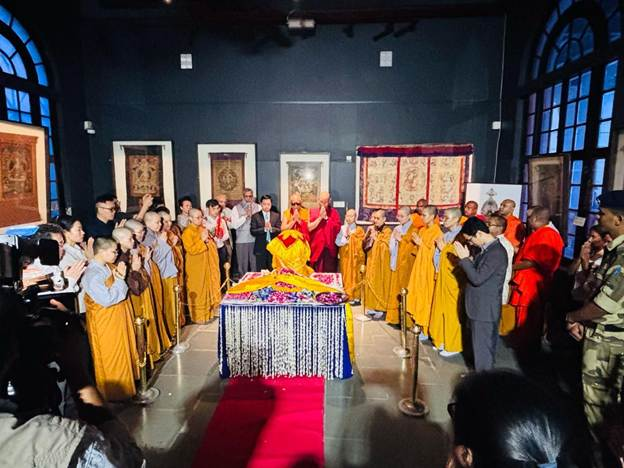 |
| A large gathering of monks, bhikkhunis, diplomats and the Sangha on April 30 offered chanting and special prayers to the Holy Buddha Relic at a protected enclosure of the National Museum, New Delhi; the sacred Relic arrived earlier from Sarnath en route to Việt Nam. Photo pib.gov.in |
*Dr. Chandan Kumar
India and Việt Nam, two nations bound by ancient spiritual ties and a shared cultural ethos, are set to script a new chapter in their civilisational relationship with the upcoming exposition of the Holy Relics of the Buddha in Việt Nam. Organised under the aegis of the International Buddhist Confederation (IBC), Ministry of Culture, Government of India, this sacred event will unfold between May 2 and May 21, 2025, across four major Vietnamese cities, coinciding with the celebration of the United Nations Day of Vesak (May 6–8). The Holy Relics—precious corporeal remains of Gautama Buddha—will journey from the sacred soil of India to the land of the rising dragon, Việt Nam, in a profound gesture of peace, unity, and shared spiritual heritage.
This is the first time in history that the Holy Relics of the Buddha will be taken to Việt Nam, offering devotees across the country a rare opportunity for darshan (sacred viewing). The event symbolises not only a sacred religious occasion but also a reaffirmation of India and Việt Nam’s Comprehensive Strategic Partnership rooted in ancient Dhamma.
India-Việt Nam Relations: A Legacy of Cooperation and Shared Destiny
India and Việt Nam share a long-standing relationship that seamlessly blends historical depth with modern strategic cooperation. From ancient Buddhist exchanges to contemporary collaborations in trade, defence, and diplomacy, this partnership has matured into a Comprehensive Strategic Partnership since 2016. The joint vision articulated in 2020— “For Peace, Prosperity and People”—guides the bilateral agenda, touching upon economic, cultural, and geopolitical dimensions.
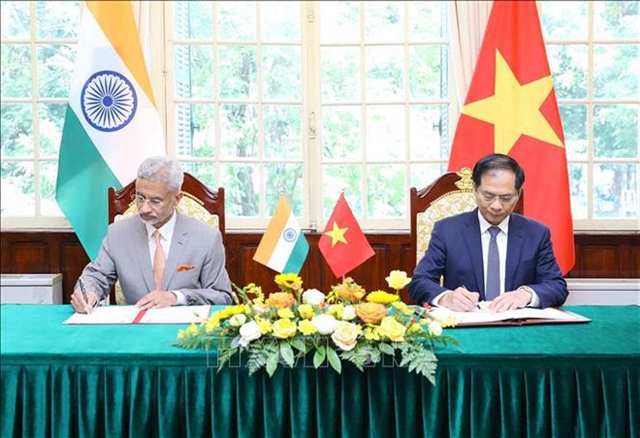 |
| Vietnamese Minister of Foreign Affairs Bùi Thanh Sơn right) and his Indian counterpart Subrahmanyam Jaishankar sign the minutes of agreement of the 18th meeting of the Việt Nam-India Joint Committee for Economic, Trade, Science and Technology Cooperation in 2023. VNA/VNS Photo |
Diplomatic engagements have been robust, with high-level visits, joint commissions, and summits strengthening mutual trust. The recent 18th India-Việt Nam Joint Commission Meeting (October 2023), co-chaired by India’s External Affairs Minister Dr. S. Jaishankar and his Vietnamese counterpart Bùi Thanh Sơn, reviewed significant cooperation in trade, technology, and culture.
Cultural exchange remains a cornerstone of this relationship. Indian initiatives such as the Swami Vivekananda Cultural Centre in Hà Nội and the conservation of the My Son UNESCO Heritage Site by the Archaeological Survey of India reflect deep-rooted historical ties. Việt Nam’s support for India’s Indo-Pacific Vision and India’s assistance to Việt Nam through Quick Impact Projects under the Mekong-Ganga Cooperation framework further reinforce the synergy between the two nations.
The Role of Buddha Dhamma: An Eternal Civilisational Link
Buddha Dhamma has historically served as the spiritual bridge between India and Việt Nam. The transmission of Buddhist teachings to Việt Nam dates back over two millennia, occurring through both maritime and overland routes. Indian monks introduced Theravada Buddha Dhamma to the ancient Champa Kingdom via the southern sea route as early as the 2nd–3rd century CE. Simultaneously, Mahāyāna traditions arrived through northern land routes via China.
One of the earliest known Vietnamese monks, Khương Tăng Hội, played a pivotal role in the spread of Buddha Dhamma in East Asia. Of Indian descent, he translated key Buddhist texts from Sanskrit into Classical Chinese, thus facilitating spiritual discourse in the region. Archaeological findings in Việt Nam, such as Sanskrit inscriptions and Indian-style stupas, testify to India’s lasting influence.
Buddhist texts like the Dhammapada, Lotus Sutra, and Heart Sutra have been part of Vietnamese religious life for centuries, first in Classical Chinese and later in vernacular Vietnamese. Pāli studies are on the rise in Việt Nam, supported by increasing engagement with Sri Lanka, Myanmar, and India. Vietnamese monks and lay pilgrims regularly travel to Indian pilgrimage sites, especially Bodh Gaya and Sarnath, to pay homage to the land of the Buddha.
The Holy Relics: A Sacred Legacy from Nagarjunakonda
The Holy Relics of the Buddha being sent to Việt Nam originate from Nagarjunakonda in Andhra Pradesh, one of India’s most sacred Buddhist archaeological sites. These relics were discovered in 1929 by A.H. Longhurst, then Superintendent of the Archaeological Survey of India, from a large stupa known as the Mahachetiya—the Great Stupa of the Blessed One.
The relic, a bone fragment of the Buddha, was found enshrined within a gold reliquary placed amidst gold flowers, pearls, garnets, and crystals inside a silver stupa. The relic was officially presented to the Mahabodhi Society of India in 1932 by the then Viceroy of India, the Earl of Willingdon, in a grand ceremony attended by Buddhists from Ceylon, Burma, Japan, and Tibet.
Currently enshrined in Mulagandhakuti Vihara, Sarnath—where the Buddha delivered his first sermon—the relic holds immense spiritual significance. Every November, on the foundation day of the Vihara, a public exposition is held, attracting pilgrims from across the globe in the true spirit of the Buddha’s teachings of compassion, equality, and universal brotherhood.
The 2025 Việt Nam Exposition: A Sacred Pilgrimage Across Four Cities
The 20-day exposition of the Buddha’s sacred relics in Việt Nam will unfold across four spiritually significant locations, offering Vietnamese devotees and international pilgrims an extraordinary opportunity to connect with the living presence of the Buddha. The sacred journey will commence at Thanh Tâm Pagoda in Hồ Chí Minh City from May 2 to May 8. Situated in the heart of Việt Nam’s economic capital, this inaugural venue marks a powerful moment of spiritual rejuvenation amid the vibrant urban landscape. The relics will then travel to Bà Đen Mountain in Tây Ninh Province from May 9 to May 13. Revered for its mystical charm and natural beauty, the hilltop location evokes the sacred geography of India’s Buddhist pilgrimage sites. From May 14 to May 18, the exposition will continue at Quán Sứ Pagoda in Hà Nội, the spiritual and historical capital of the country. As the headquarters of the Việt Nam Buddhist Sangha, Quán Sứ Pagoda will witness an atmosphere of deep devotion and national reverence. Finally, the relics will be enshrined at Tam Chúc Pagoda in Hà Nam Province from May 16 to May 21. As Asia’s largest Buddhist complex, Tam Chúc—renowned for its majestic architecture and tranquil surroundings—provides a solemn and awe-inspiring conclusion to the sacred tour, symbolising the enduring and universal message of the Buddha.
This sacred journey across Việt Nam symbolises a pilgrimage of peace, a movement of sacred unity, and a celebration of the Dharma that transcends borders.
A Spiritual Diplomacy for the 21st Century
The exposition of the Holy Relics of the Buddha in Việt Nam is more than a religious event—it is a testament to the enduring spiritual, cultural, and diplomatic bond between India and Việt Nam. In an era marked by global conflicts and cultural fragmentation, this sacred event reinforces the Buddha’s eternal message: “Hatred does not cease by hatred, but only by love; this is the eternal law.”
Through the symbolism of relics, the wisdom of Dharma, and the power of civilisational diplomacy, India and Việt Nam are demonstrating how ancient values can illuminate modern paths. As the Holy Relics travel through the spiritual heartland of Việt Nam, they not only revive shared heritage but also chart a new direction in regional cooperation, people-to-people connect, and spiritual unity in Asia.
As the wheel of Dharma continues to turn from Sarnath to Saigon, the Buddha’s message of peace finds new expression—strengthening the fabric of Indo-Vietnamese ties and offering the world a living example of how shared heritage can inspire a peaceful and harmonious global order. VNS
Dr. Chandan Kumar is an Assistant Professor at the University of Delhi




